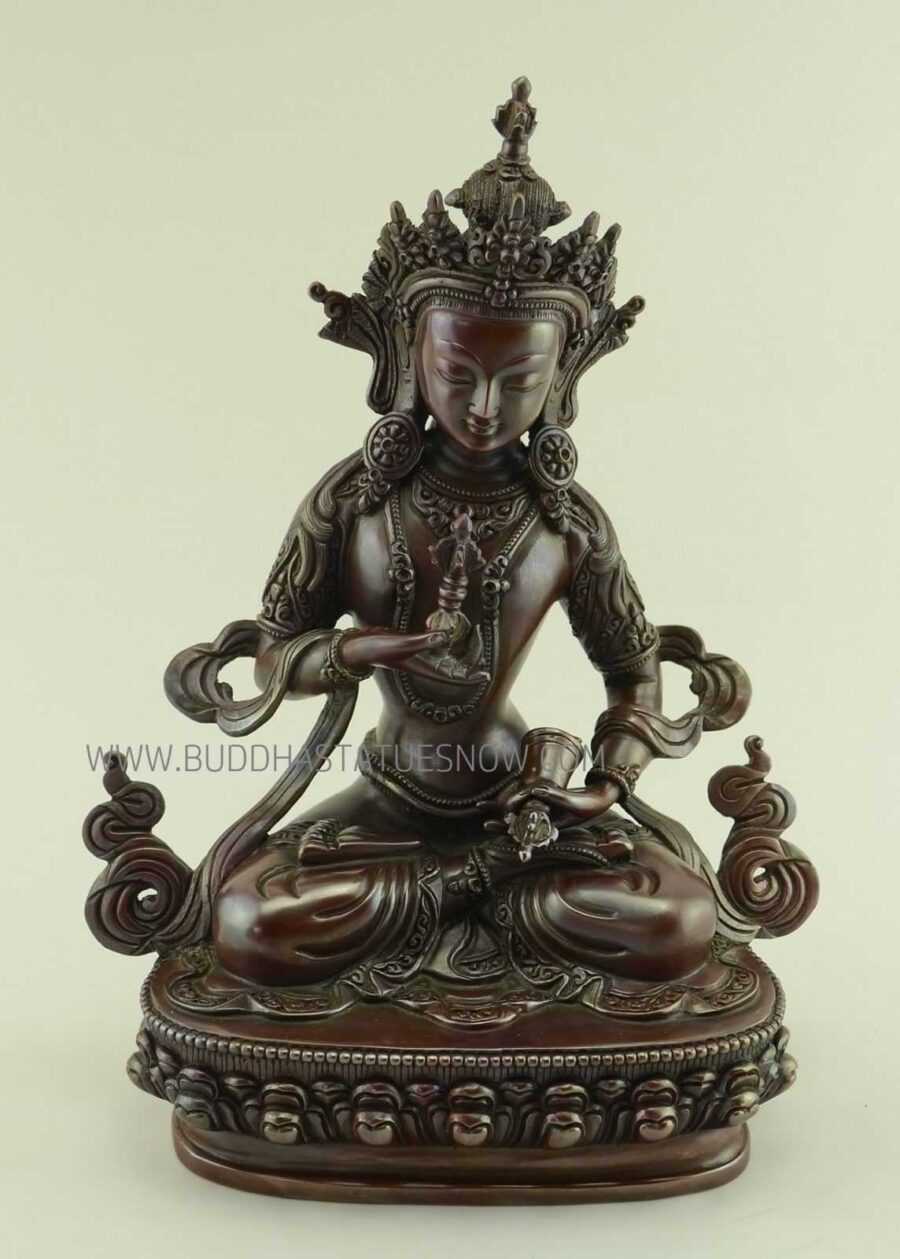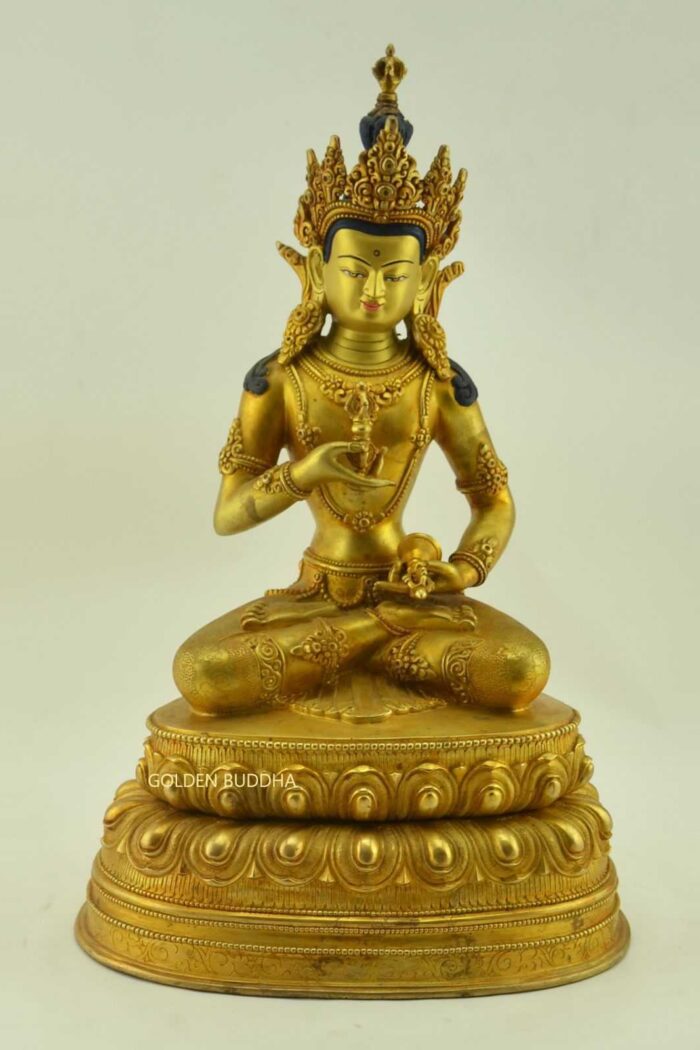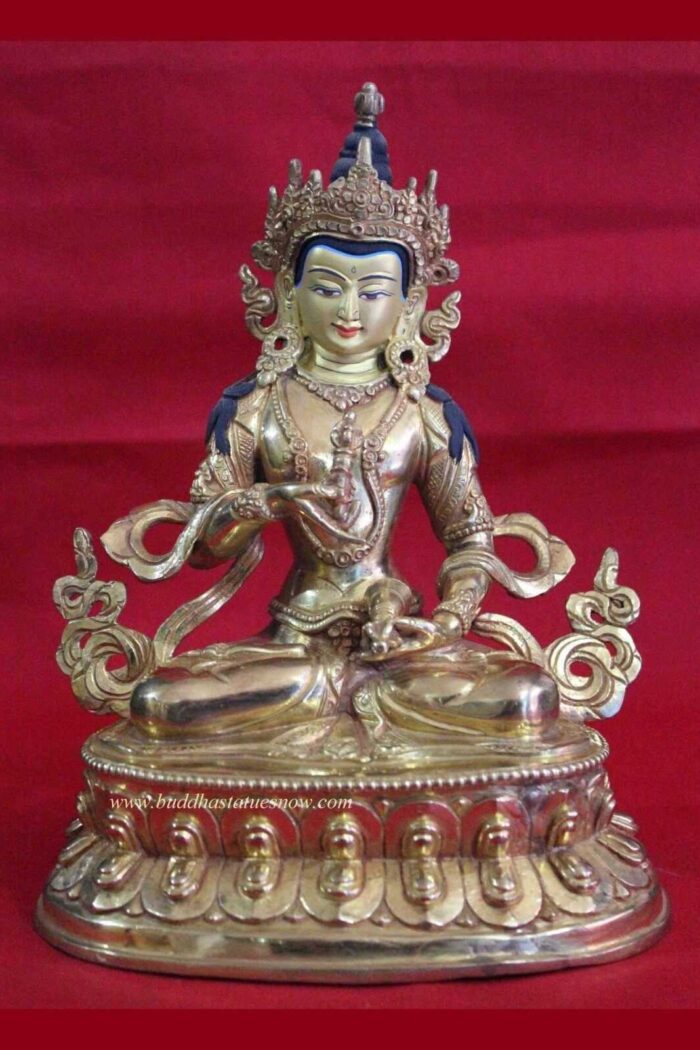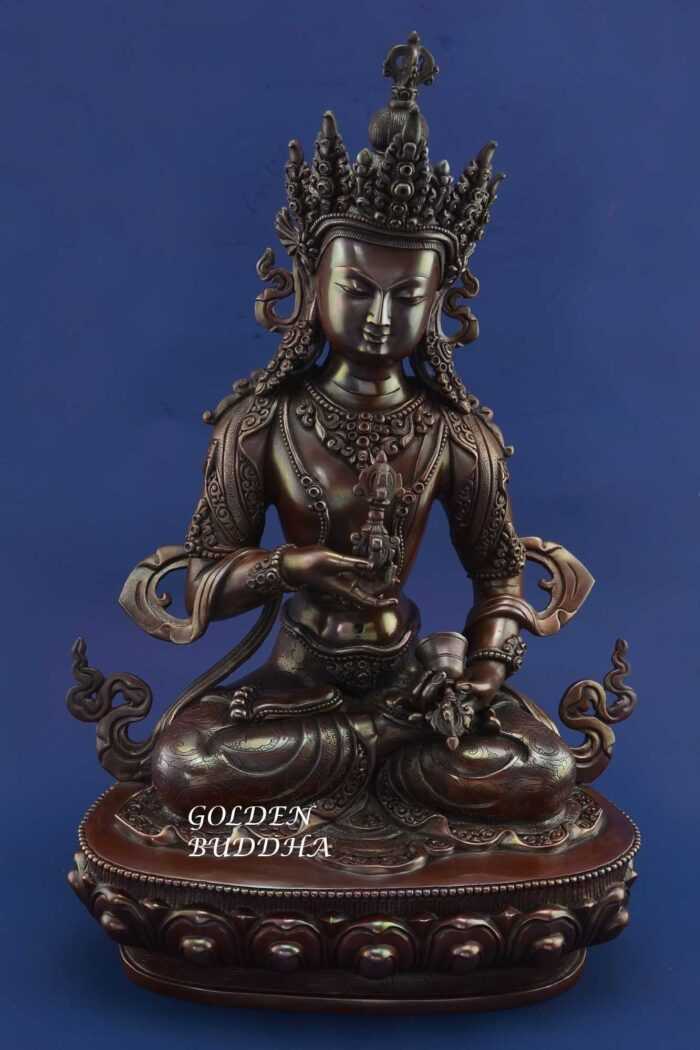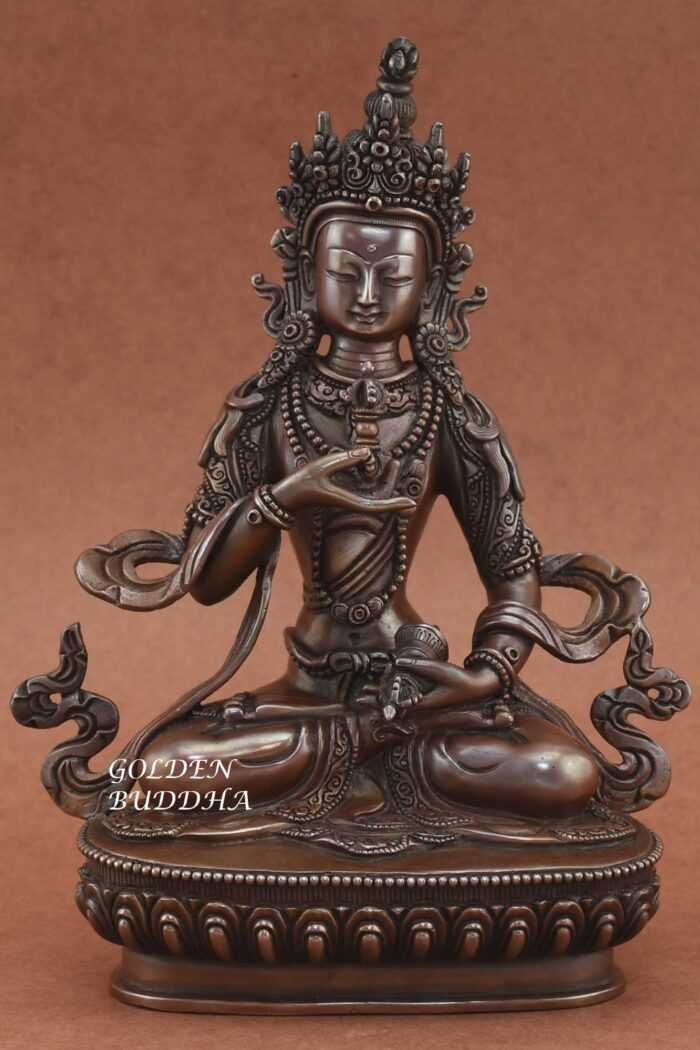Our antiquated Vajrasattva statue is depicted wearing the crown and jewels of a Bodhisattva. At the request of the buyer we can embed the statue with colorful turquoise stones. Symbolically, turquoise is a special combination of blue and green which gives the statue a dual meaning. Indeed, blue signifies the purity of the Buddhas and green symbolizes their readiness to act. These special adornments embellish your statue well and will inspire all those who lay their eyes on it.
Antiquated Vajrasattva Statue Features
Vajrasattva is depicted sitting in full lotus pose on a single lotus pedestal. In his right hand he holds the vajra which is the masculine symbol for compassion or skillful means. Additionally, he holds the ghanta bell in his left hand which symbolizes the feminine attribute of wisdom. It is the joining of these two virtues that will give devotees the enlightened body, speech and mind of a Buddha. In other words, the eternal union of compassion and wisdom is the state of Nirvana.
Tibetan Buddhists strongly associate Vajrasattva with karma purification rituals. As a result, devotees believe that reciting his mantra will clean the five aggregates of all past negative karma. Vajrasattva has two mantras – a 100 syllable mantra and a much shorter 6 syllable mantra. Although lamas teach devotees that both mantras are equally effective, the 100 syllable mantra is clearly more difficult. Nonetheless, all devotees need to say is “Om Vajrasattva Hum” and the Vajrasattva will heed their call. Click here to discover more.


